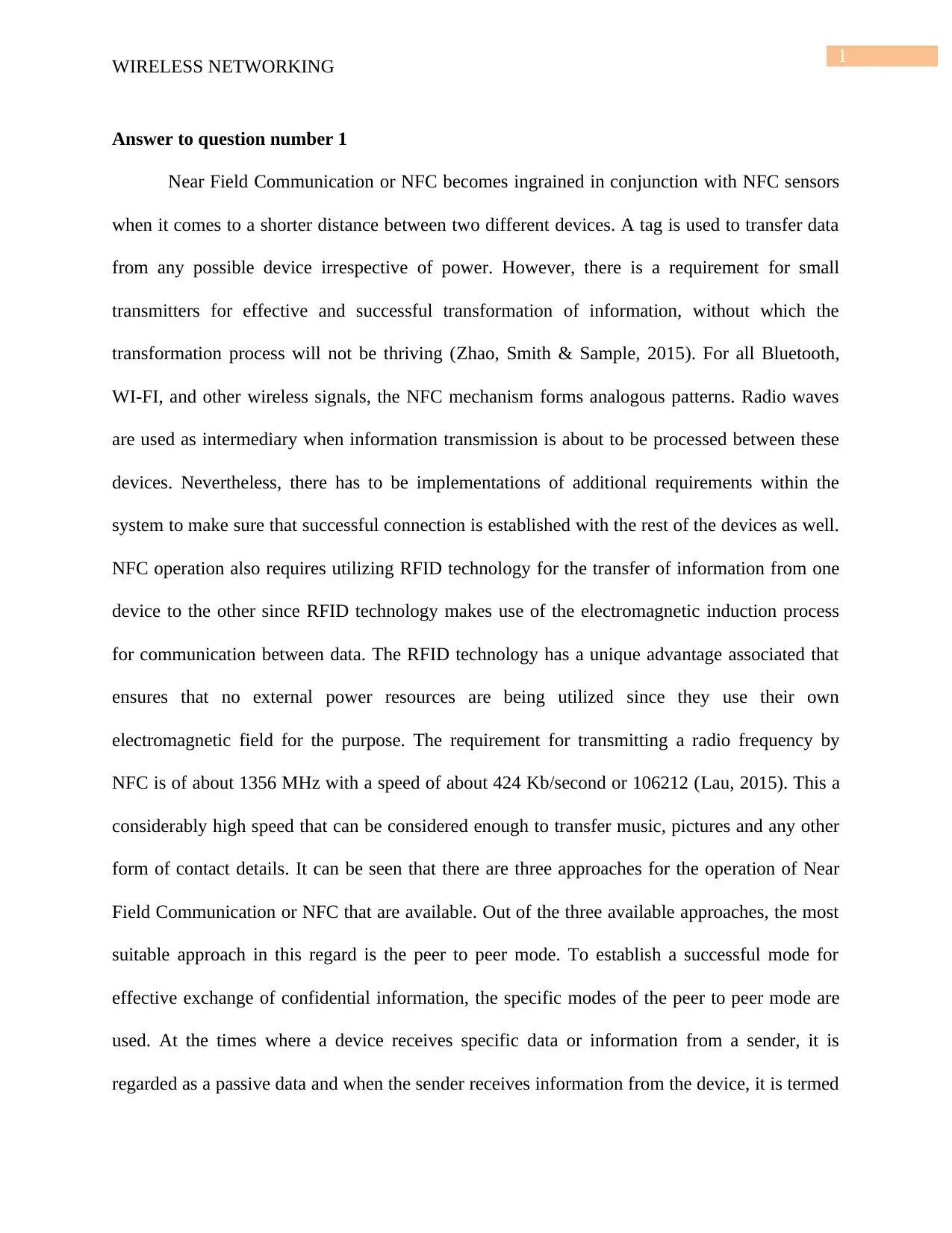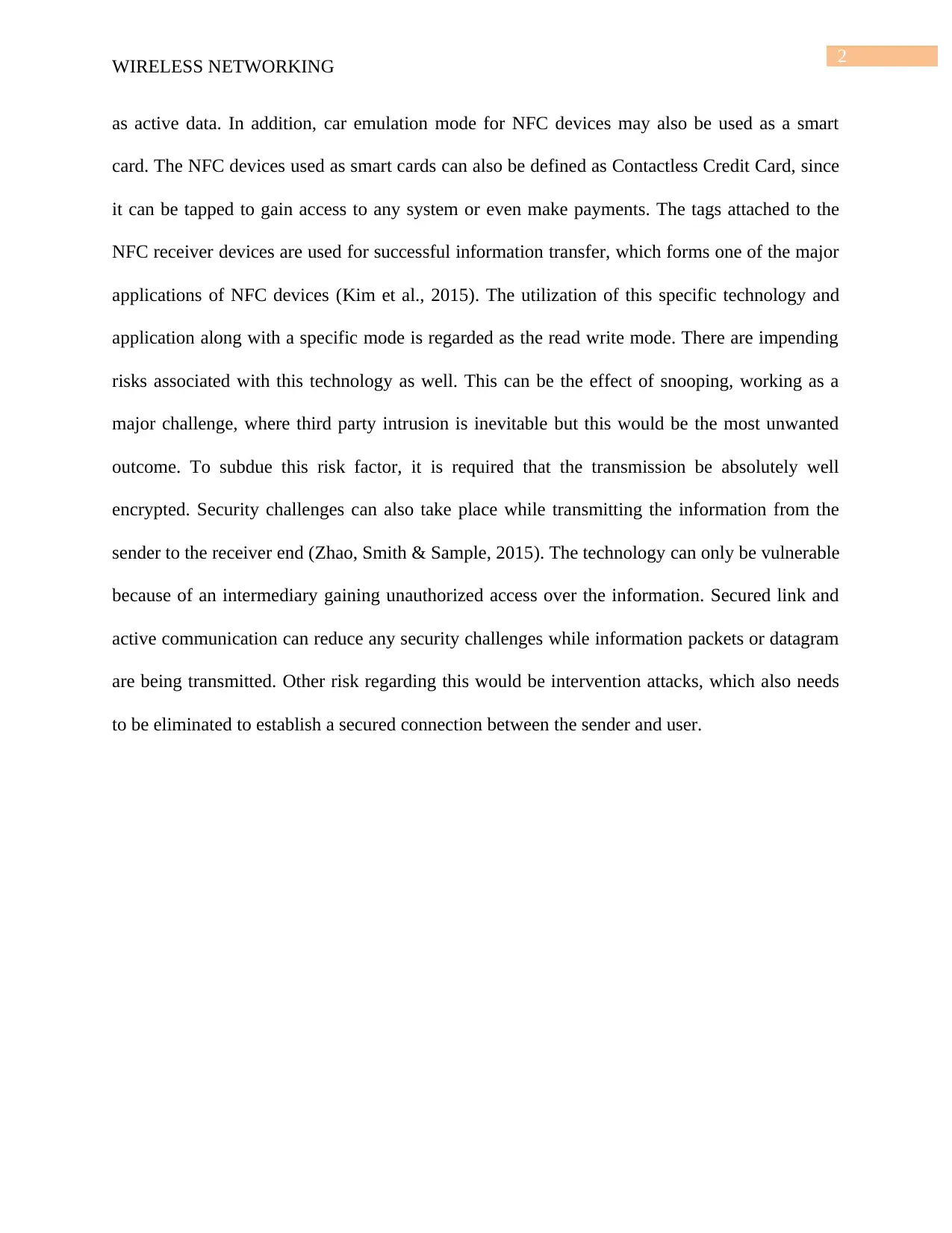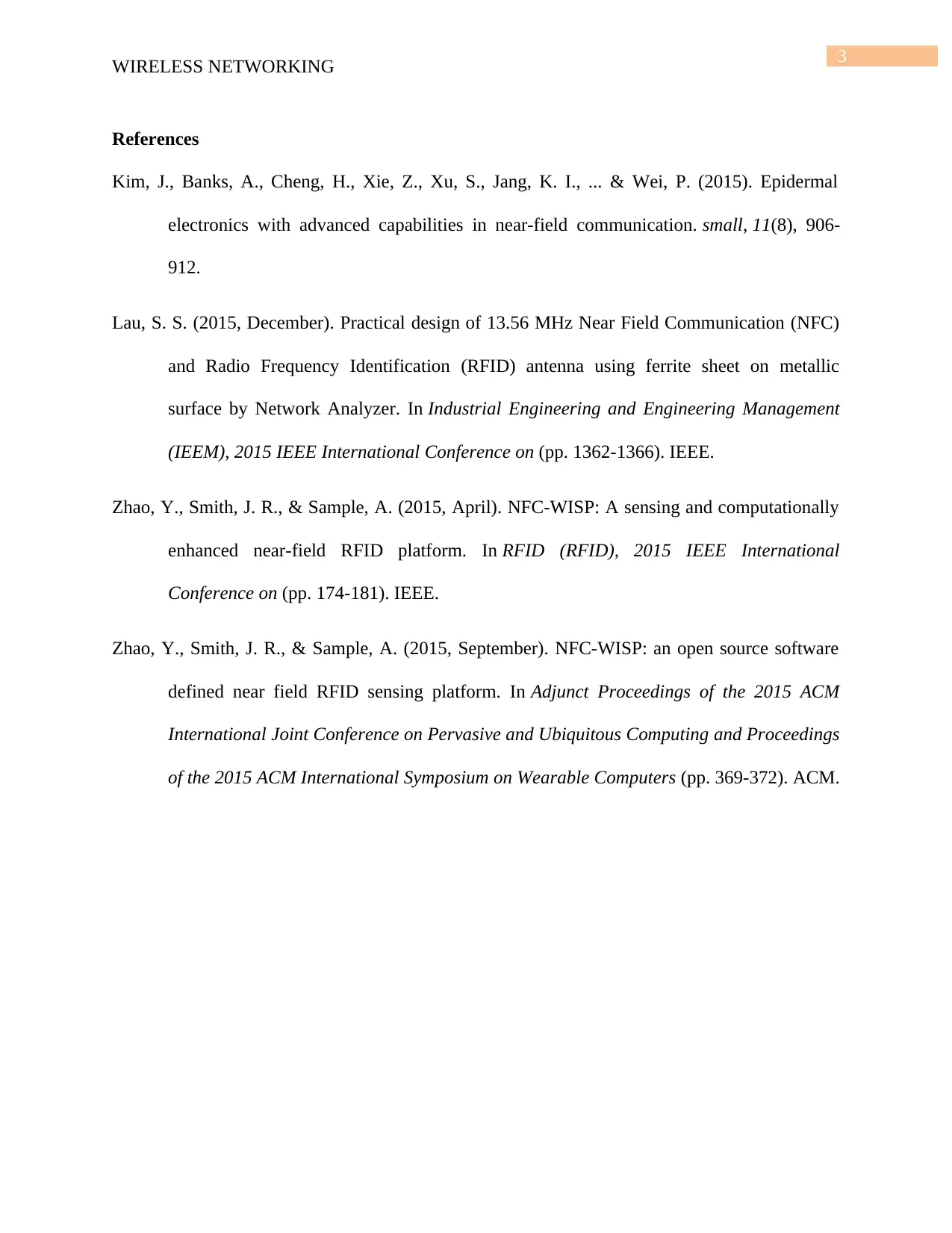Wireless Networking Report: RFID, NFC, Security, and Packet Tracer
VerifiedAdded on 2023/06/04
|4
|876
|408
Report
AI Summary
This report provides an analysis of wireless networking, focusing on Near Field Communication (NFC) and Radio Frequency Identification (RFID) technologies. It explains the operational mechanisms of NFC, including its peer-to-peer mode and car emulation mode, and compares it with RFID, highlighting their applications and security challenges such as snooping and intervention attacks. The report also delves into security considerations, emphasizing the need for encryption and secure links to mitigate risks. Furthermore, the report includes a practical component involving the use of Packet Tracer simulation software to set up and configure a wireless network. It details the implementation of WPA2-PSK security with AES encryption and evaluates the network's functionality through ping tests, documenting the communication process and the impact of security measures on network connectivity. The report aims to provide a comprehensive understanding of wireless networking concepts, security protocols, and network simulation techniques.
1 out of 4










![[object Object]](/_next/static/media/star-bottom.7253800d.svg)